Accurate Time Tracking Is So Much Easier With Workyard
We all know that labor costs are one of the largest expenses for any construction business. And labor costs have an inverse relationship with profits.
Keep your workforce payroll down, increase your profits.
These are hard-earned profits at stake. So it was surprising to learn that so many companies are still tracking employee hours and capturing their construction time keeping on paper.
For the companies who have made a switch to a construction time keeping app, we wanted to know the biggest reasons they were motivated to make a change.
Increase profits by measuring & managing your crew’s work
TRY WORKYARD FREESo we interviewed hundreds of construction company owners and administrators. Here are the 6 most common reasons why they made the switch.
Construction time keeping on paper time cards is inaccurate
The overwhelming reason that owners told us they’ve moved away from using paper-based construction time cards for construction time keeping is that it’s inaccurate.
With most of their crew working remotely on multiple projects they felt like there wasn’t enough transparency using paper.
And that caused a lot of frustration.
We heard stories like:
- My crew used to submit their time cards with the exact same hours every Friday.
- I showed up on a job site at 3:30 to see that one of my guys wasn’t there. He sent me a time card showing that he worked until 5.
- I have guys that forget to send me their time each day. They end up texting me at the end of the week. I know they can’t remember the details a week later.
All of those owners wanted a better way to track employee hours and know what was going on. They felt out of the loop. They also wanted a way to have peace of mind there was no deliberate time theft occurring on their watch.
In the end they turned to construction time clock apps that gave them the proof of their employee hours.
How?
GPS time cards gave them the proof they needed.
Those construction time keeping apps show exact arrival and departure times for every address visited while employees are clocked in.
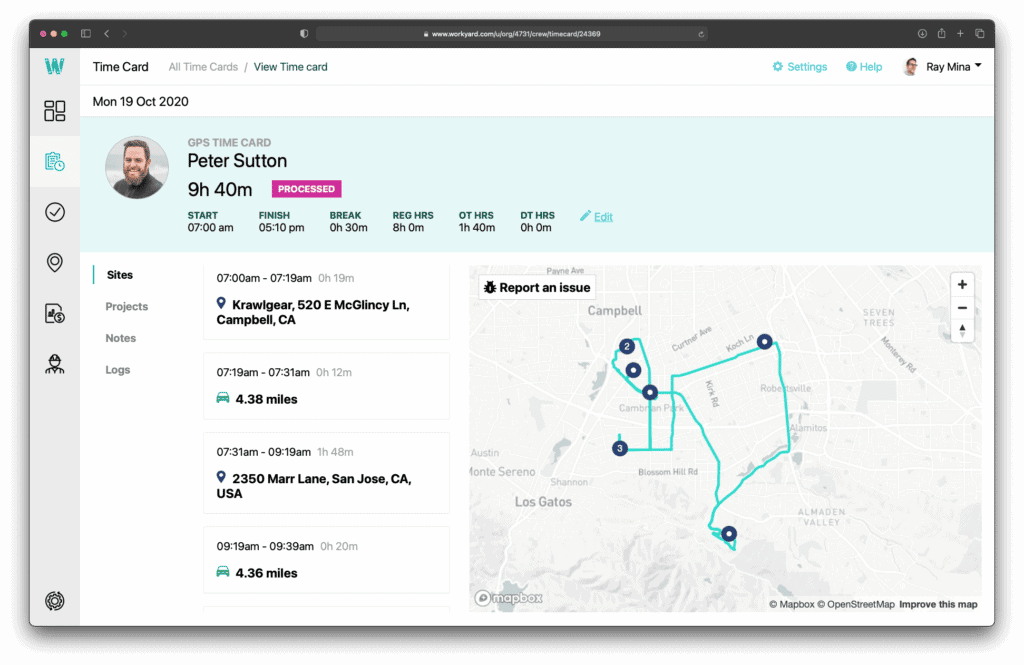
The mobile app can also detect geo-fences when employees arrive at any preconfigured job site. If the employee forgets to clock in the app can use geo-fencing to record their arrival time, then share it on their time card.
Owners said having a mobile time clock app that records time cards with detailed location information provides them confidence in their accuracy.
You’re losing money on payroll
Those inaccurate time cards may result in frustration, but they cause an even bigger problem.
Owners end up spending more on payroll than they have to. And sometimes that payroll loss is big.
Many owners were able to do some rough math to estimate that loss.
Here’s what one told us:
I did the math and figured out I lost $20,000 last year on payroll thanks to inaccurate timesheets across my 15 guys. Maybe they were honest mistakes, but they were still costing me money.
Construction company owner
By implementing a time tracking app with robust GPS capabilities owners were able to create more accurate time cards.
The result? Lower payroll expenses and increased profits.
If you’re looking for an easy way to add $20,000 to the bottom line implement time tracking on your employee mobile devices.
Manual payroll calculations are error prone
Tracking hours accurately eliminated frustration by helping owners feel like they had more transparency into what their field-based construction workers were doing. It also helped reduce payroll expenses by eliminating errors.
But tracking hours is only part of the work.
Turning those hours into actual payroll amounts is something that can be a burden trying to do on paper.
That’s because to turn those hour-based time cards into a paycheck for your employees requires a number of calculations.
- You have to factor in unique pay types like salary, hourly, or 1099 contractors.
- You have to calculate overtime for each employee.
- Unless you have a payroll provider to do it, you’ll also need to calculate payroll taxes (ouch).
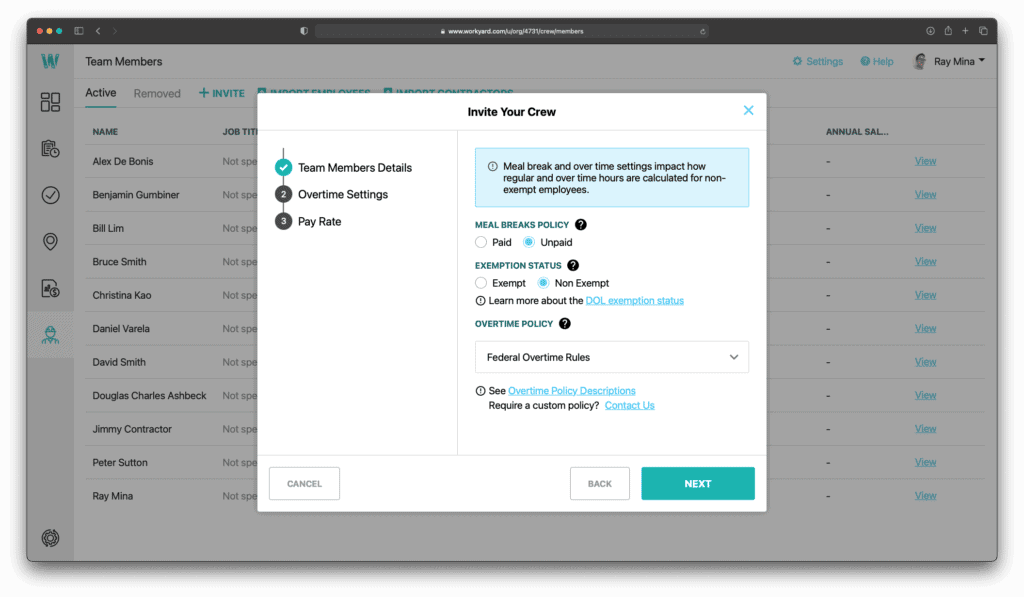
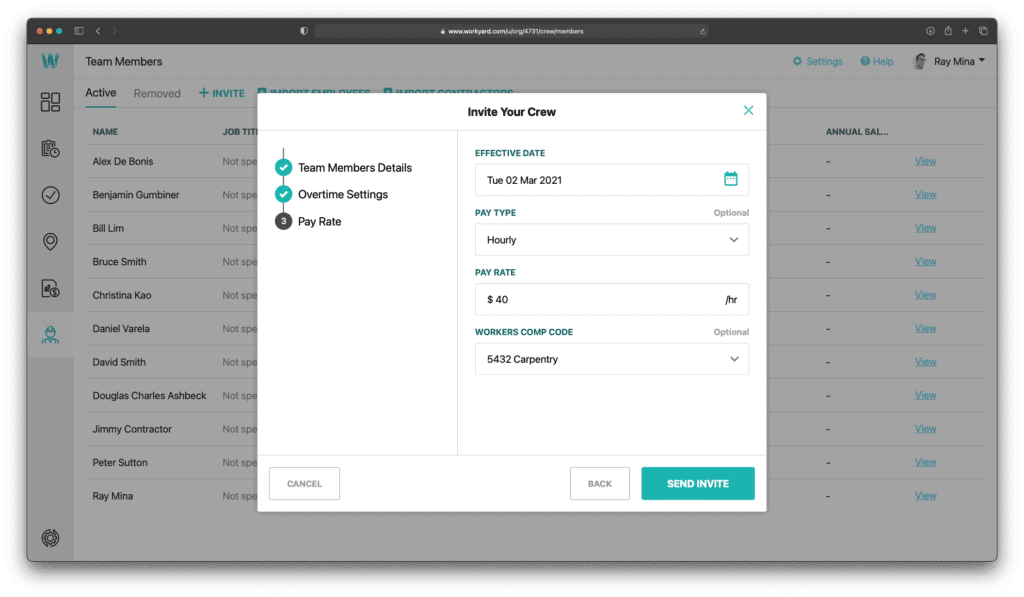
Owners were careful to select a construction time keeping app that took the hours and automatically calculated pay types, rates, and overtime.
Payroll processing takes a lot of time
Construction companies we interviewed told us the entire process of getting payroll done was a time burden when they used paper.
Manually collecting paper timesheets or employee hours from text messages took admins hours of time each week.
After all of those hours were collected they still had to calculate pay rates and overtime. If they didn’t have an accountant or payroll provider to handle their payroll tax calculations they had to do that as well.
Owners told us that a time tracking app that handled all of their payroll calculations saved 4-8 hours of admin work each month.
They then ensured that the data could be sent directly to major payroll providers like ADP and Gusto to handle taxes and payroll processing.
Invoices to clients aren’t dialed in
Many companies we talked to had a combination of fixed-basis and variable cost projects.
They said that tracking their employee time using paper made it difficult to accurately invoice their clients on the variable cost projects.
That’s because it was really difficult to track how much time each employee spent on a specific project, let alone a detailed task.
Lacking that information caused them to overcharge clients at times, which resulted in unhappy customers.
It also caused them to underreport hours and charge clients too little. That resulted in a loss of profit on that project.
By moving off paper and using software for their construction time keeping owners were able to invoice clients more accurately.
That’s because the Android and iOS apps they implemented allowed their employees to allocate their hours to projects and cost codes from their phones.
The resulting reports could easily be sorted by project and cost code to see labor costs in actual dollar amounts.
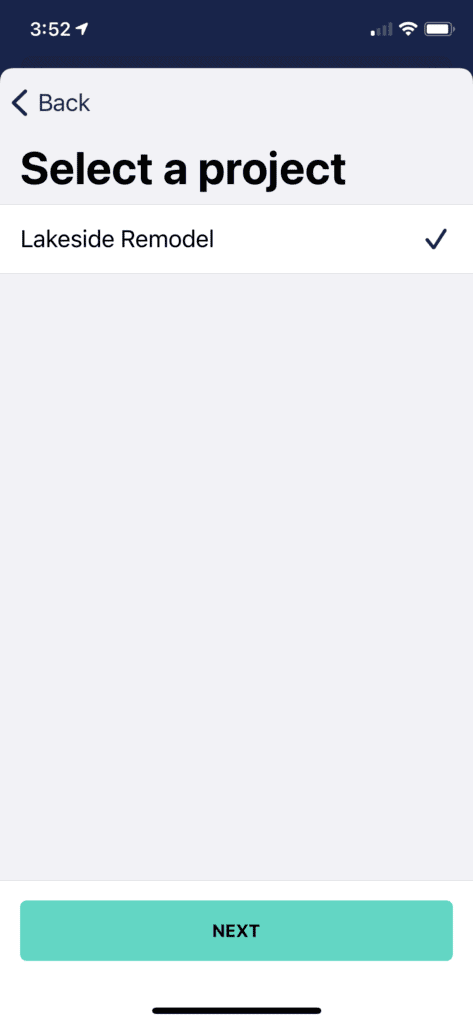
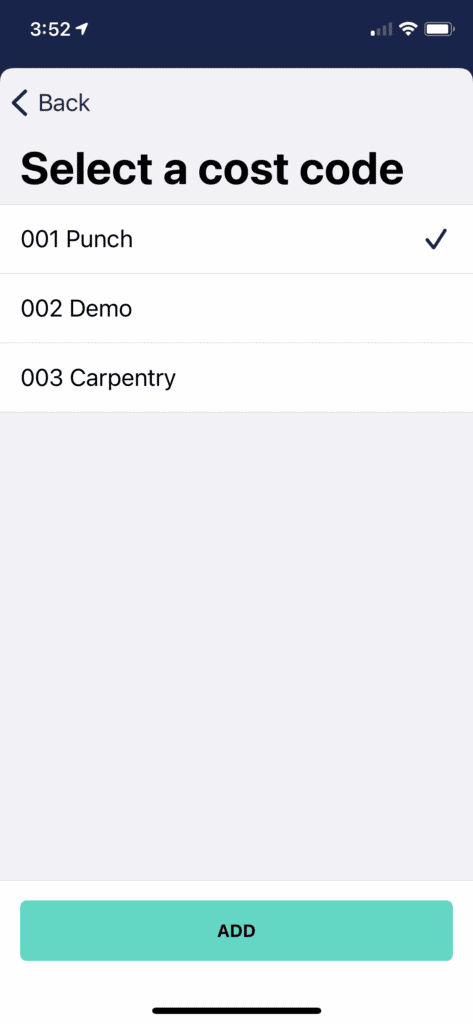
You’re missing out on the opportunity to get better at future bids
Job costing feels like the holy grail. That’s because it typically requires the manual collection of data.
All of those hours your construction crew tracks through paper timesheets need to be inputted into a spreadsheet. It’s no wonder owners give up.
So what’s the answer? How do you more easily get to your job cost data?
The answer is by using your construction time keeping software.
Job costs can be more easily collected by allowing crew members to log their hours from their smartphone. Using the same app they can allocate hours to projects and cost codes.
Time tracking software can turn hours into dollar amounts through built in calculations. Those costs can then be sorted into real-time reports.
By having historical cost information for your projects you’ll be armed with the information you need to adjust employee productivity on the fly.
You’ll also have excellent points of comparison to help inform future bids on similar projects.
Keep your labor costs down. Improve your profits.
Managing your employee time data using paper was a frustrating experience for almost every construction company we spoke with.
And that’s reason enough to change the way you do things.
But it’s not the main reason owners switched off paper.
The main reason was that an inaccurate paper process causes a loss in profit from overpaying on payroll.
And switching to an app-based way of managing your construction time keeping has never been easier.
Did you find this post helpful? Please rate it!




 (No Ratings Yet)
(No Ratings Yet)

